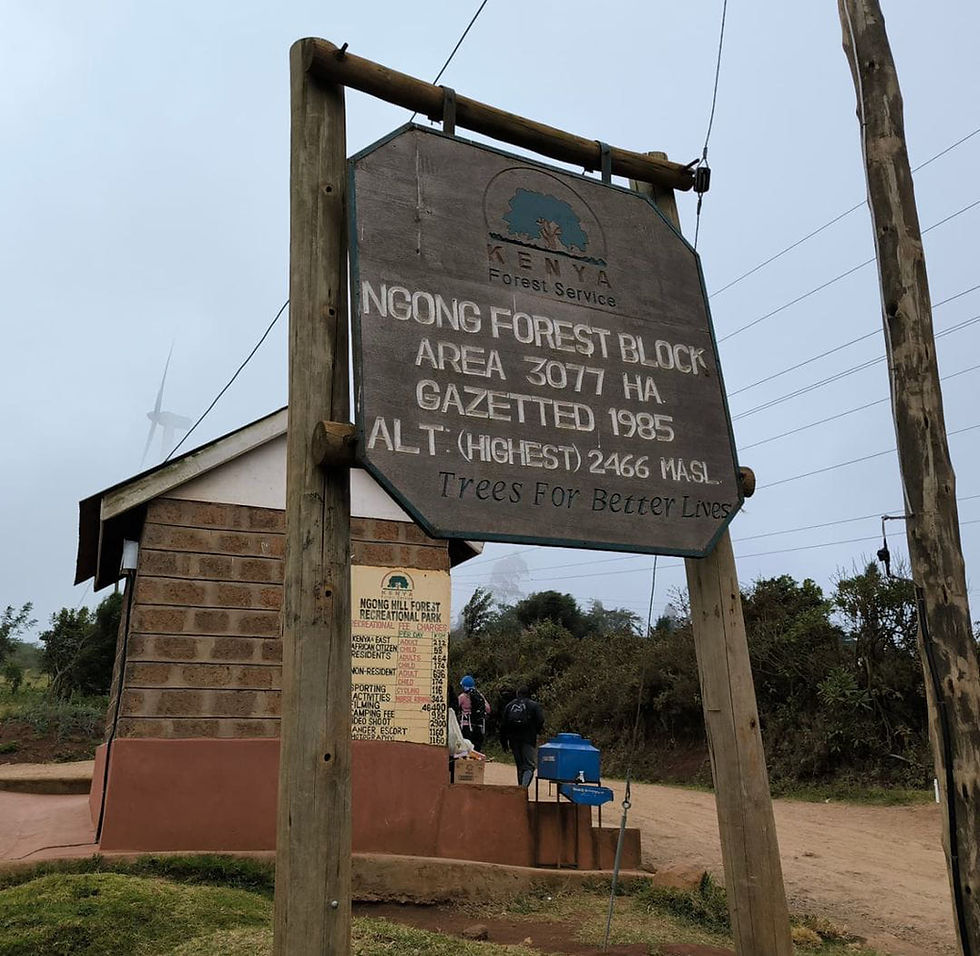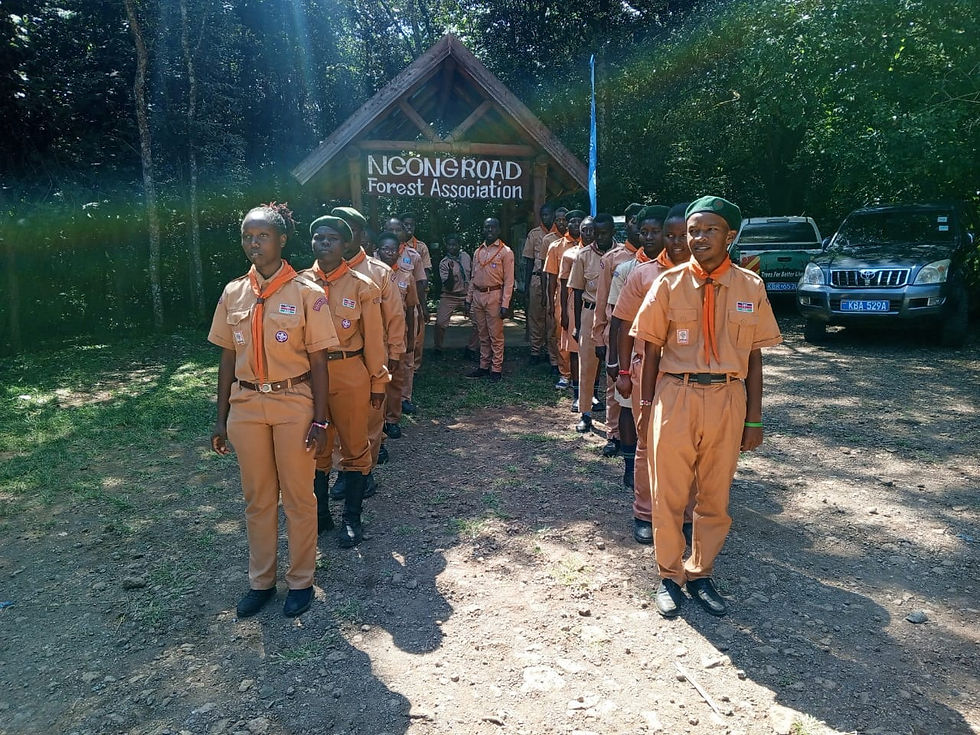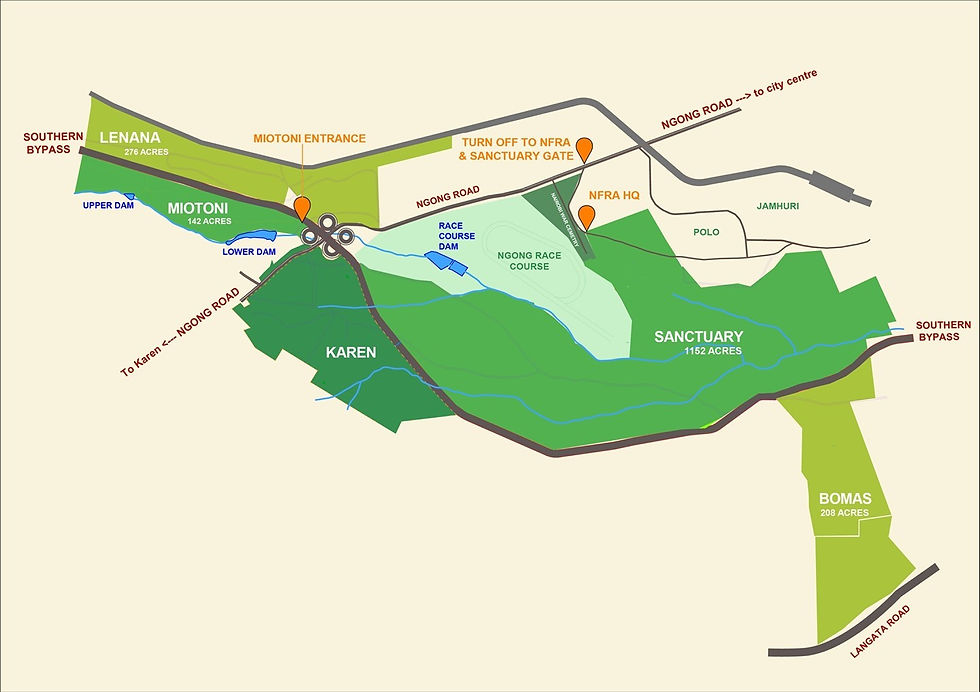The Ngong Forest Block
- BeyondForest
- Oct 13, 2024
- 3 min read
Updated: Nov 13, 2024

In this section we will look at
0.)About Ngong Forest
1.) List of Ngong Forest Charges
2.)Climate and weather at Ngong Forest
3.)Ngong Forest Map
4.)Biodiversity at Ngong Forest
5.)Conservation efforts around Ngong Forest
6.)Activities to do at Ngong Forest
8.)Ngong Forest Event Charges

Image of Ngong forest block
The Ngong Forest, located on the Ngong Hills the word ‘’Ngong’’ is an Anglicization of a Maasai phrase ‘’enkong’u emuny’’ meaning rhinoceros spring thus the name derives from a spring located near Ngong Town. The Forest is located approximately 22 kilometers southwest of Nairobi, the capital city of Kenya.

Image of Ngong hills wind mills
Although Ngong Forest size is 3077 hectares .The Forest has undergone deforestation due to the settlement of Karen and Ngong, as well as to the development of the Lenana School and the Ngong Racecourse These events have reduced Ngong Forest's original 2,926.6 hectares (7,232 acres) to the current 1,224 hectares (3,020 acres).

Image of Ngong hills
The forest lies on the Ngong Hills, which are part of the Great Rift Valley, at elevations ranging from 1,800 to 2,400 meters above sea level.outside Nairobi, Kenya, is a vital ecological zone that serves multiple purposes, from conservation to recreation.

Image of Kibera Rover In service scouts at Ngong Forest
This area, rich in biodiversity and natural beauty, is not only a crucial water catchment but also a popular destination for tourists and locals seeking respite from urban life.
Ngong Road Forest Sanctuaries this habitat of indigenous trees is home to many wild animals, including leopards, spotted hyenas, and Cape bushbucks. Other animal residents include crowned eagles, owls, snakes, and many other birds and reptiles
List of Ngong Forest Charges

Ngong Forest Entrance fee for Kenyan and East african citizen adults is 232 while for children the entrance fee is 58 shillings making majority of Ngong Forest entrance to have majority of even numbers implying paying is by mobile.
Kenyan Adults | 232 Ksh |
East African Adults | 232Ksh |
Resident Adults | 464Ksh |
Non-resident Adults | 696Ksh |
Kenyan Child | 58Ksh |
East African Child | 58Ksh |
Resident Child | 174Ksh |
Non-Resident Child | 174Ksh |
Cycling | 116Ksh |
Horse Riding | 342Ksh |
Ranger Escort | 1160Ksh |
Photography | 1160Ksh |
Filming | 46,400Ksh |
Camping Fee | 986 Ksh |
Video Shoot | 2900Ksh |
The climate in Ngong Forest is characterized by cool temperatures and significant rainfall, particularly during the long and short rainy seasons. Average temperatures range from 10°C to 20°C. Rainfall averages around 1,000 mm to 1,500 mm annually, making the forest a crucial watershed for the surrounding regions.
Ngong Forest Map

Image of Ngong Forest Map
Ngong Road Forest has 5 sections namely
Miotoni
(fenced & accessible)
Lenana
Karen
Sanctuary
(accessible)
Bomas
(accessible)
Biodiversity at Ngong Forest
Ngong Forest is home to a diverse array of species, making it an important ecological zone. Key aspects of its biodiversity include:
Flora
The forest features indigenous tree species such as podocarpus, cedar, and various species of acacia. Understory vegetation includes shrubs, ferns, and a rich variety of herbs, contributing to the forest’s complexity.
Fauna
Ngong Forest is inhabited by numerous animal species, including monkeys, bushbucks, and a variety of bird species. The presence of these animals plays a crucial role in seed dispersal and maintaining the ecosystem's balance.
Ecosystem Services
The forest provides essential services, including carbon sequestration, soil stabilization, and water purification. It also supports local agriculture by maintaining the water table and regulating local weather patterns.
Conservation Efforts around Ngong Forest
Given its ecological importance, Ngong Forest is subject to various conservation initiatives aimed at preserving its biodiversity and ecosystem services.
Reforestation Projects
Local and national organizations have initiated tree planting campaigns to restore degraded areas of the forest.
Community Involvement
Engaging local communities in conservation efforts helps raise awareness and support sustainable practices.
Wildlife Protection
Measures have been put in place to protect vulnerable species and their habitats within the forest.
Ngong Forest is a popular destination for both locals and tourists, . The forest's scenic views and diverse wildlife attract nature lovers, contributing to local tourism revenue.
Ziplining at the Kompass

Image of Ziplining by Davies Kinanga
Ziplining at the Kompass is almost 1KM.

Image of Ziplining Do's and Donts by Davies Kinanga
There are two options, you can do one line which cost KES 700 or two lines for KES 1000.
Bike Riding
Archery
Picnic
Hiking
Bird Watching
Ngong Forest Event


Comments